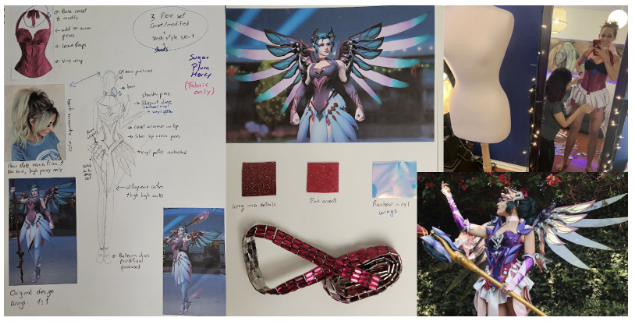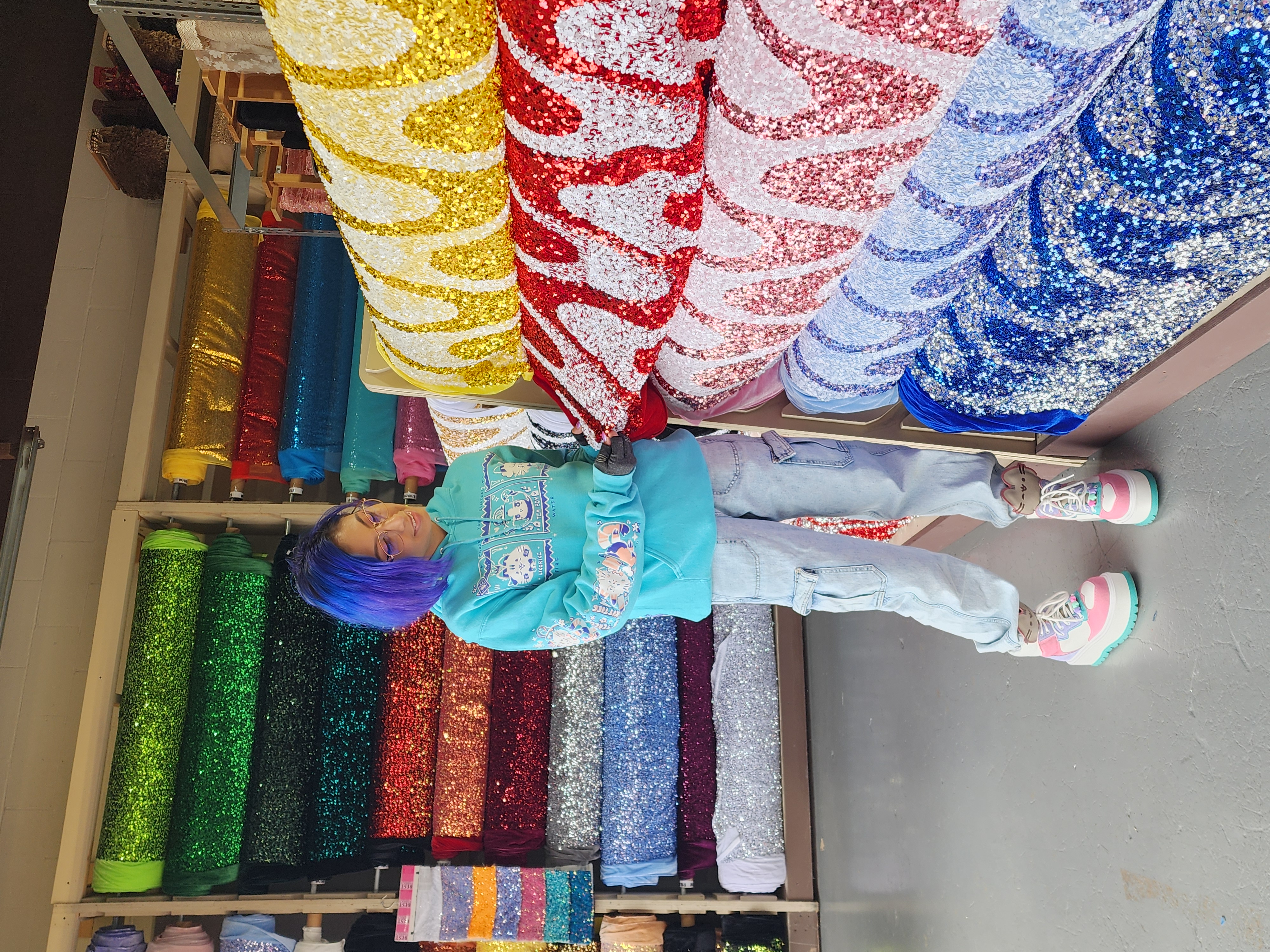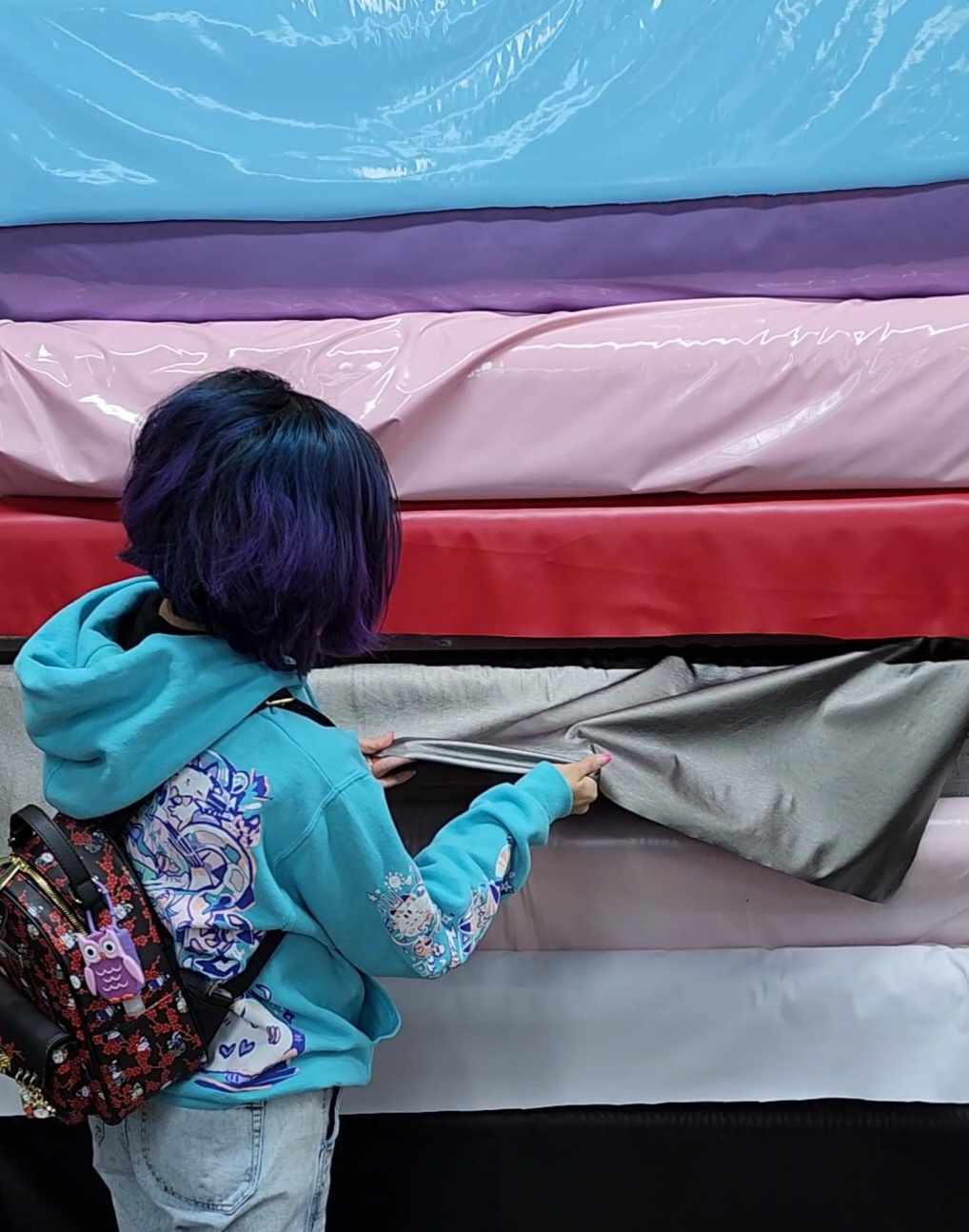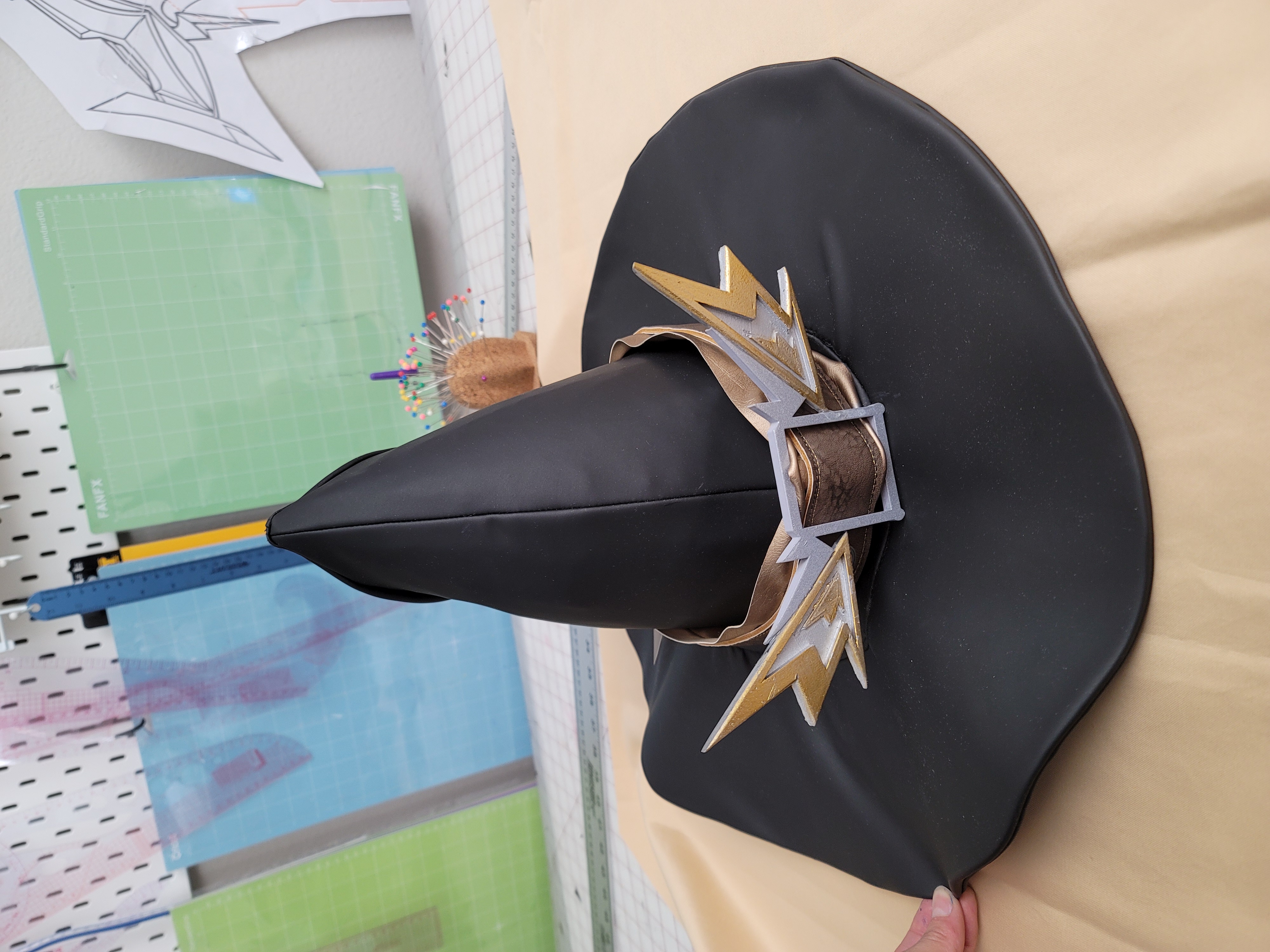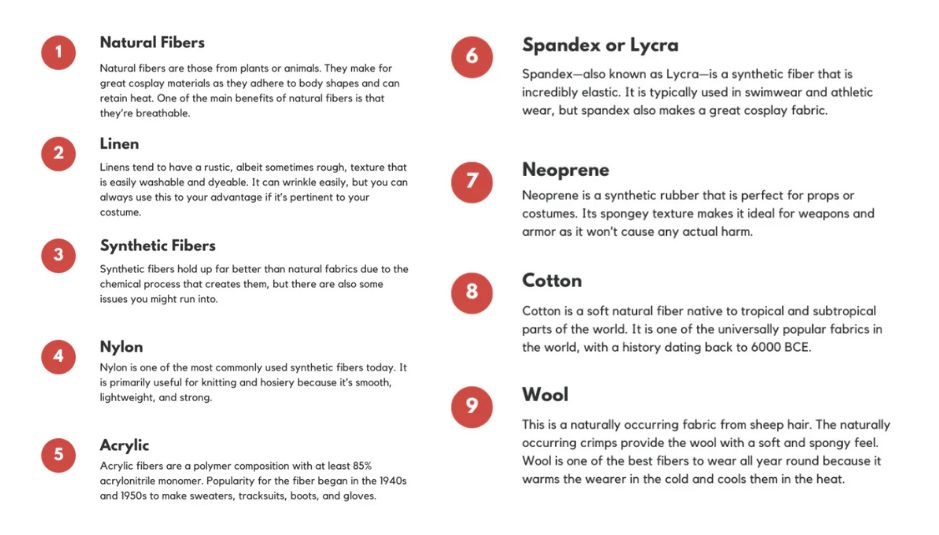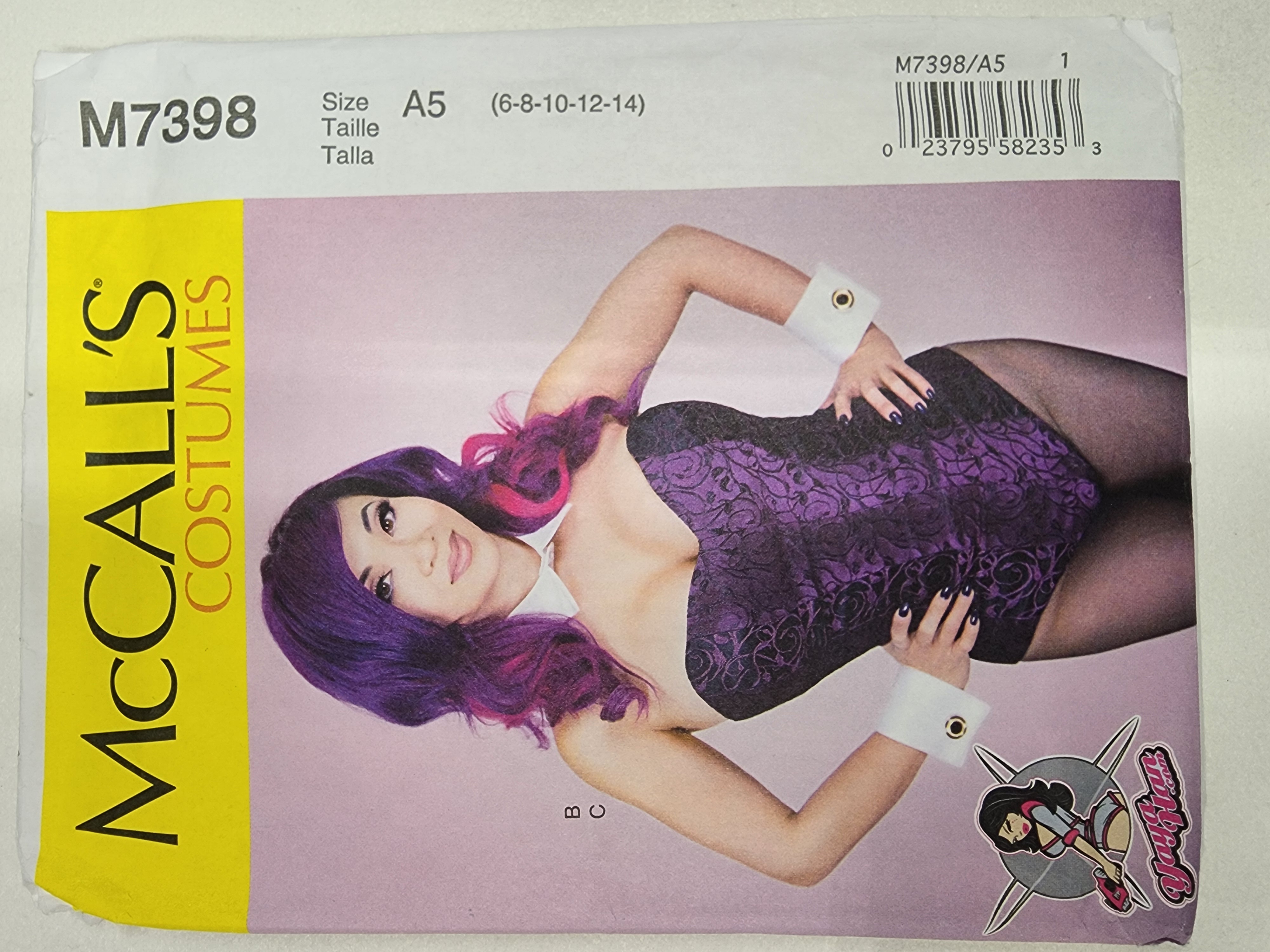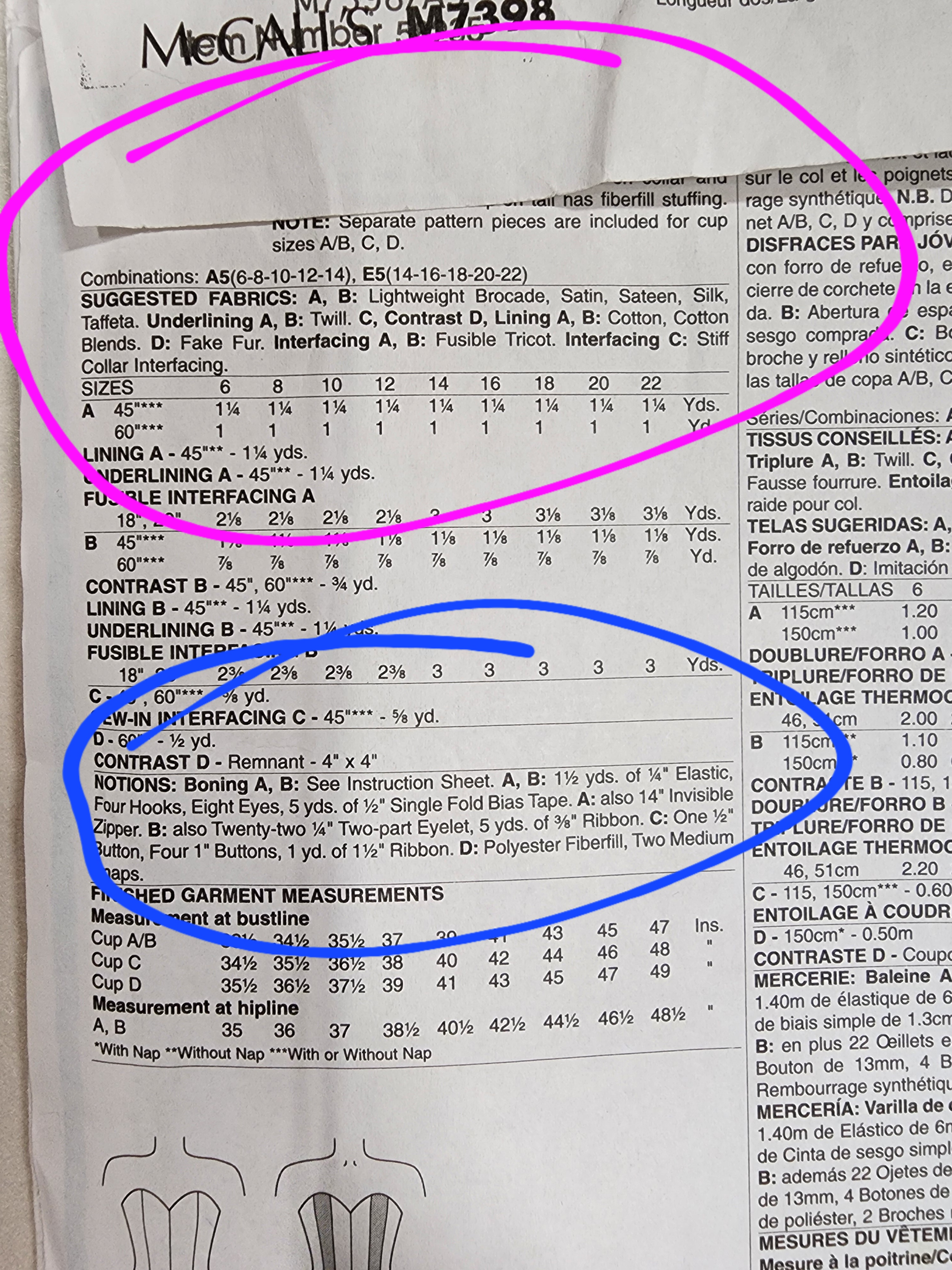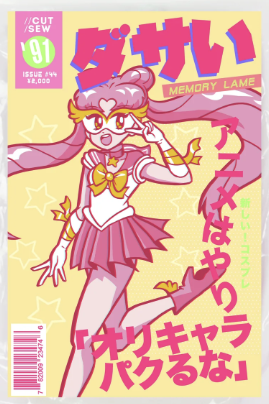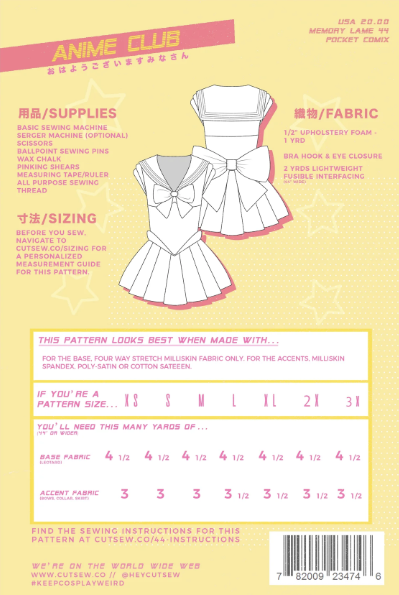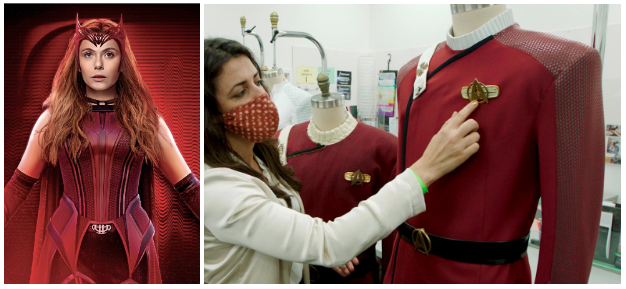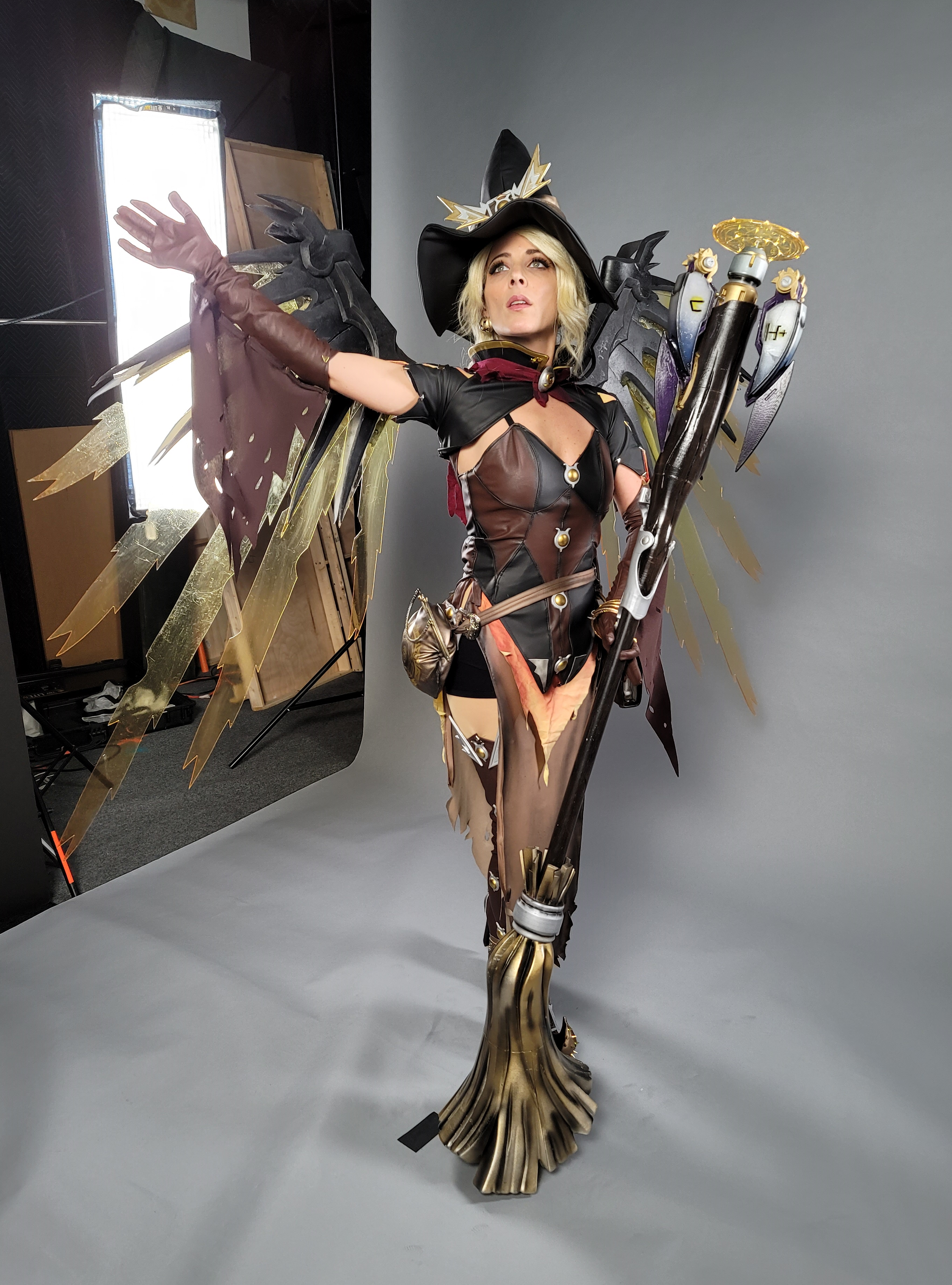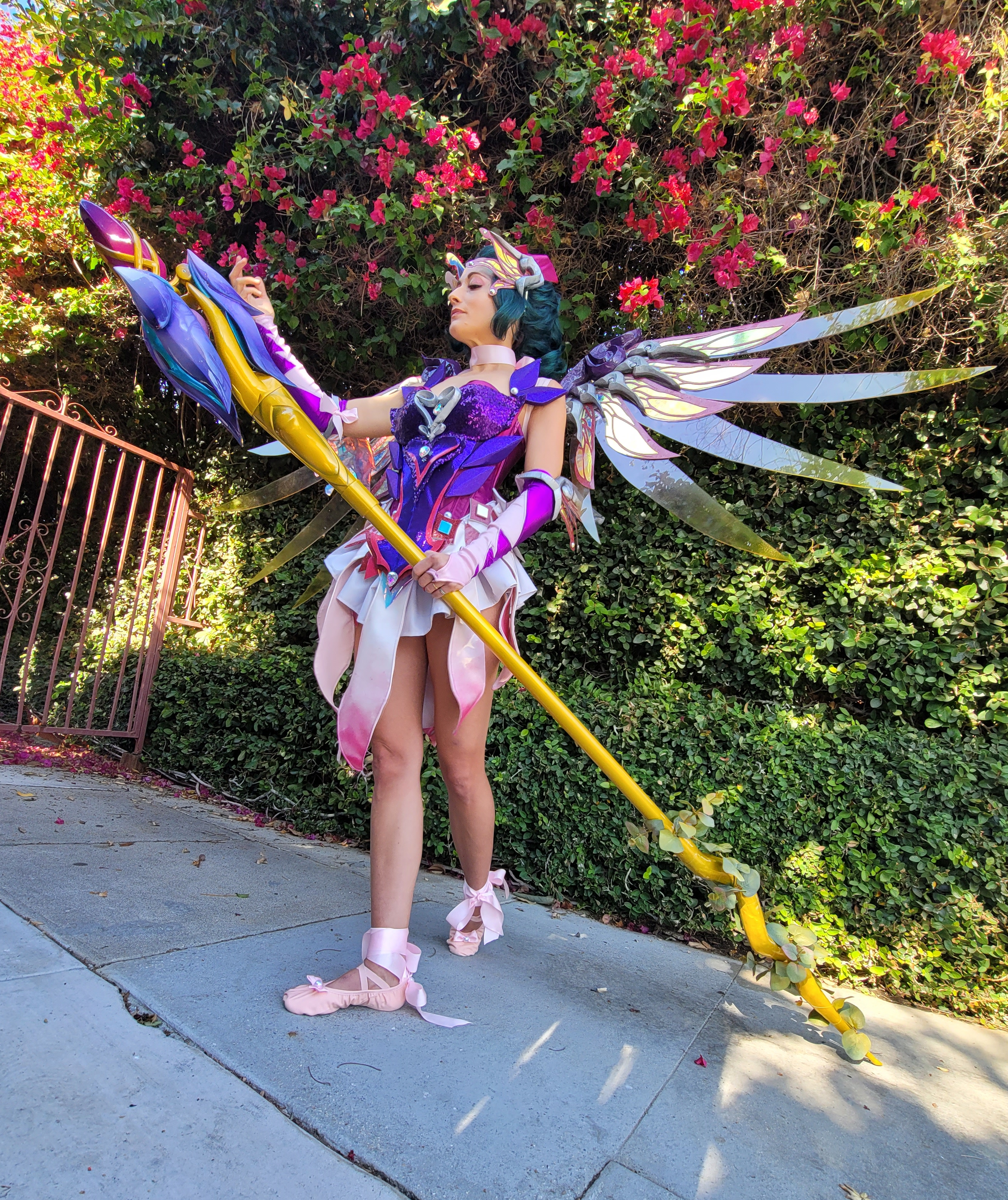Fabric Quest Success: Finding the Perfect Materials for Your Cosplay
Posted by Melanie Jasmine on Sep 24th 2024
Join Melanie Jasmine to uncover the secrets to sourcing and selecting the perfect materials for your costume creations. Whether you're a novice or seasoned maker, this post offers invaluable insights into fabric varieties, pattern selection, thread choices, and intricate detailing techniques.
This post is an extension of Melanie’s “Fabric Quest Success” presentation during the Cosplay Academy held in July 2024.
...
Character Research: History and Background
I like starting my research process on materials by researching my character and asking questions like: who are they? What is their background? What is their personality like? Do they have a specific color scheme? Are there any particular traits that make my character unique and identifiable? Does their outfit have pockets?
Getting to know my character will make it easier to pick fabrics and accessories that will suit and that will “make sense” in the context of the entire costume
Ex: Is my character a princess or a warrior? Do they prioritize comfort over function? Are we looking for a crisp and clean finish or a weathered and rugged one?
Image Caption: Inspiration doodles and first fabric selection for Sugar Plum Mercy.
Selecting Our Fabric
Now this is when things get interesting! For this section, we will start looking at different types of fabric such as woven vs spandex, shiny vs matte, thread count, pleather vs pleather and vinyl vs leather, and our budget.
I like starting by selecting my character’s color palette and its most unique characteristics, identifying the textures, drapings, and weathering (if any) the final costume will have.With all this in mind, the next step is to make a trip to the fabric store. I like looking and feeling the weight of the fabric, doing some mock draping, and testing it for comfort, transparency, and function.
Pro Tip: I’m a big fan of using spandex for video games and superhero-inspired costumes, so I always make sure that I test the stretch and transparency of the fabric against my skin. This is specially true with lighter-color fabrics, especially white, and it applies to wovens and stretch materials. Most of the time you will need some sort of lining to achieve a clean finish when using white or light pastel-colored fabrics.
Image Caption: Mercy Witch skin (Overwatch) initial fabric selection process and results
As much as I love going into a physical store to play around with the fabrics, they are not always available depending on your location. Online retailers are a great alternative, and they may even be cheaper, just make sure that you are checking the listings carefully, looking at multiple photos under different lighting, reading reviews, and the exact composition of the fabric. I like ordering fabric samples and catalogs from big retailers of spandex and vinyl, because I usually end up ordering from them a few times per year.
Tips for Buying Fabric Online
- Make sure that you get a catalog, swatches or samples before placing a large order of fabric, especially if you are planning to order multiple times from the same retailer.
- If you are re-ordering fabric, make sure it matches the SKU on their website or check a Pantone color guide if you need a specific color
- If you are ordering a very large amount of fabric, for a gown, for example, some online and offline retailers offer the option to buy “by the roll” which is usually cheaper
- Always check for coupons before checkout!
Image Caption: This is a brief description of the most popular type of fabrics used in cosplay and costuming.
Source: fabricwholesaledirect.com
Now let’s talk about patterns and how to select the right one for your costume. I start the process by identifying everything my character is wearing. For instance, If I want to make Usagi from Sailor Moon, I will start looking at sailor uniforms, bodysuits, skirts, gloves, boot covers, and even ice skating suit patterns. It all depends on your take on the character, and the patterns have to match the type of fabric you are planning to use.
Matching Your Fabric to Your Pattern
This is the easiest part of the process. I like picking my fabric and patterns at the same time because certain patterns are made for specific types of fabric. For example, a bunny suit pattern for woven fabrics will call for brocade, satin, silk, or taffeta, but if you use a knit fabric like spandex, the final result won’t match the intended measurements of the assembled suit.
Always make sure that your pattern matches your fabric! It will save you time and a couple of headaches.
Image Caption: See the Suggested fabrics and notions on the back of McCall’s M7398 Bunnysuit pattern, all woven fabrics
Image Caption: Cut/Sew 044//Anime Club - Sailor Fuku Senshi Sewing Pattern calls for knit fabrics like four-way stretch milkskin, spandex, and poly-satin
When in doubt, ask around!
When I feel stuck during the creative process, or I can’t find enough reference photos of my character, I look at how other cosplayers made their version of the same character, or I start asking my cosplay friends or online forums. I’ve even gone as far as DM’ing other cosplayers asking about specific techniques or where they got certain materials.
Did you know?
TV shows and movies, especially superhero movies, use video editing techniques to hide zippers, velcro, elastics, and seams on their actors' superhero suits to maintain the Illusion. Good luck finding Spiderman’s back zipper! (or his serger)
On the same topic of TV shows and movies, it’s very common for big productions to get rolls of fabric custom-made, printed, or dyed for specific characters, so don’t feel bad if you can’t find the EXACT match for certain fabric, because it may just not be available to the public.
Image Caption: Pictured: 1. Wanda Maximoff (Scarlet Witch) - Marvel MCU2. Start Trek: Strange New Worlds uniforms by Costume Designer Bernadette Croft
Final Pro Tip: No matter what fabric or materials you select for your costume, make sure you can get in and out of it easily, on your own. You will thank yourself at the end of a VERY long convention day (or when you have to rush to the restroom, haha!).
Finally, just have fun! Making a costume is all about enjoying the creative experience, and making cool friends in the process!
In case you were wondering about the Mercy cosplay builds we mentioned above, this is the final result:
Image Caption: Top: Lucie Pohl (Mercy’s voice actor) dressed as Mercy-Witch skin. Bottom: Carolina Ravassa (Sombra’s voice actor) dressed as Mercy-Sugar Plum skin
Additional Resources
PDF of Melanie Jasmine’s Cosplay Planning Guide
Useful Links:
- What Are Good and Bad Costumes for Beginners?
- Choosing the Right Fabric for Your Cosplay
- How to Read a Sewing Pattern
...
Melanie Jasmine, a celebrated costume maker and cosplayer from the DFW area, is dedicated to bringing beloved video game and comic book characters to life with stunning accuracy and creativity. Known as MJasmine in the cosplay community, Melanie specializes in crafting intricate designs using pleather, vinyl, knits, and unconventional materials, pushing the boundaries of traditional cosplay.
A passionate educator, Melanie travels across the United States, sharing her wealth of knowledge and expertise through engaging panels, discussions, and workshops. In addition to her educational endeavors, Melanie Jasmine is a prominent figure at the Dallas Makerspace, where she serves as the committee chair for the esteemed cosplay and costuming club. Here, she dedicates her time to teaching sewing and costume-making techniques, fostering a supportive community of like-minded creators.
Social Media Handles:


